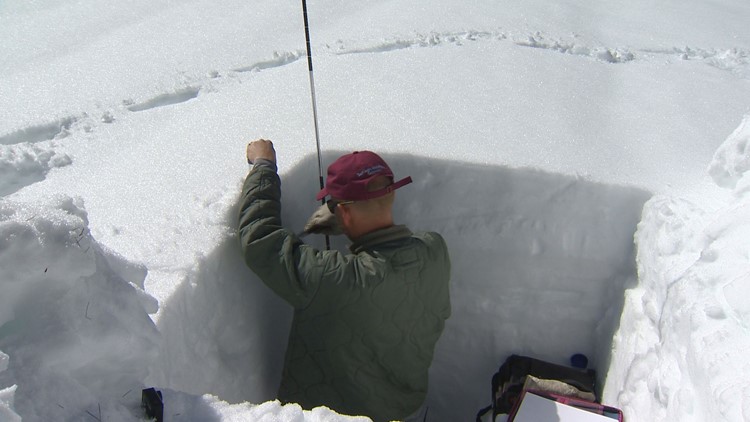Jeff Derry’s job requires a little more time out of the office than some others. Several times a month he packs up his gear - skis, poles, and a shovel - before heading into high elevation.
“The poles and skis and boots are just to get into where we're going,” he explained.
On Wednesday, he was going to one of his sample sites, located near Berthoud Pass, to measure the amount of dust in the snowpack. Derry is the executive director of Center for Snow and Avalanche Studies where he operates the Colorado Dust-On-Snow program.
Dust on the snow can determine how fast the snowpack will melt.
“If the surface of the snowpack is dirty, that absorbs more of the suns energy,” Derry said. “So it melts snow earlier, typically, and it melts the snow faster, compared to a clean snow surface. A white snow surface reflects more of the sun's radiation back into the atmosphere.”
Derry and his team monitor the dust that usually blows from deserts in the southwest.
They measure samples at 11 high sites around Colorado. First, they dig into the snowpack until they reach the dirt below. Then, data they record about dust and water is shared with agencies that manage water around the state.
“Municipalities, water managers, reservoir operators – they all need to know the timing and rate of snowmelt as well as quantity of snowmelt that is in the snowpack,” he said. “So we help them assess when the snow is going to melt and how fast it’s going to melt; when they’ll see it in the streams -- so they can manage those resources efficiently and effectively.”
Derry and his team take samples once a month at each of the 11 sites throughout the snowpack season. He said, this year, dust from the Front Range sites are mild, while the dust near the San Juan mountains is closer to average.
But the snowpack is lower than usual.
“We’ll tend to see an early melt from a shallow snowpack,” he said.
Derry said it’s important to take data from the snow, in order to know what may happen within one season as well as monitor changes over time.
“So we can understand the process that’s taking place, and we can better understand the processes and adapt to what’s going on,” he said. “This is Denver’s water. This is Arizona’s water, Nevada’s water, California’s water right here.”



